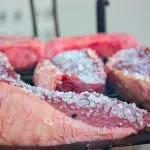Gold Bali Kratom, originating from Bali, Indonesia, is a premium strain cultivated through traditional methods involving precise land selection, climate control, and hand-harvesting. This meticulous "grow kratom" process ensures slow growth, maximum nutrient absorption, and potent effects. The region's tropical climate and volcanic soil contribute to its unique aroma, flavorful profile, and sought-after effects, making it a top choice for enthusiasts who appreciate quality grow kratom techniques. Similar strains like Red Bali also showcase the impact of growing conditions on Kratom profiles, with rich soils and warm climates resulting in vibrant colors and complex alkaloid profiles.
“Discover the enchanting world of Indonesian kratom with a focus on two distinct strains: Gold Bali and Red Bali. This comprehensive guide explores their unique origins, cultivation processes, and the art of ‘grow kratom’ techniques that set them apart. From lush Bali landscapes to specific soil compositions, these factors shape each strain’s profile. Uncover the differences in effects, potency, health benefits, and more, as we navigate the choice between Gold Bali and Red Bali in the dynamic market.”
- Origin and Cultivation of Gold Bali Kratom
- – Where and how is Gold Bali grown?
- – Soil composition and climate impact on the strain
- Red Bali: A Closer Look at Its Characteristics
Origin and Cultivation of Gold Bali Kratom

Gold Bali Kratom, a beloved strain among enthusiasts, hails from the lush forests of Bali, Indonesia. This unique variety is cultivated with meticulous care, reflecting the island’s rich botanical heritage and traditional farming practices. Growers in Bali have perfected the art of growing kratom, using sustainable methods that preserve the delicate balance of these rare plants. The Gold Bali strain is known for its slow growth rate, allowing for optimal nutrient absorption, which contributes to its potent effects. This meticulous grow process ensures a high-quality product sought after by those who appreciate the finer nuances of kratom.
The cultivation techniques employed in Bali involve careful selection of land, proper drainage systems, and a controlled climate. Farmers often hand-harvest the leaves at their peak maturity, ensuring freshness and potency. This attention to detail in the grow kratom process is what makes Gold Bali stand out, offering users a premium experience that has garnered its reputation as a top-tier strain.
– Where and how is Gold Bali grown?

Gold Bali Kratom, a beloved strain among enthusiasts, is meticulously grown in the lush green landscapes of Indonesia, specifically on the island of Bali. The cultivation process involves careful selection of high-quality plants and a meticulous approach to ensure optimal conditions for their growth. Farmers here employ traditional methods, combining knowledge passed down through generations with modern techniques to create an environment that fosters robust and potent kratom plants.
The region’s tropical climate, rich volcanic soil, and abundant natural resources play a significant role in the plant’s development. By controlling various factors like lighting, temperature, and humidity, farmers can significantly influence the strain’s characteristics. This attention to detail in the grow kratom process results in a premium product known for its distinct aroma, flavorful profile, and potent effects.
– Soil composition and climate impact on the strain

The unique characteristics of Kratom strains, such as Red Bali and Gold Bali, are deeply rooted in their specific grow kratom conditions. Soils play a crucial role in shaping these plants’ makeup; rich, nutrient-dense earths can lead to enhanced leaf colors and potent compounds. The climate, too, exerts its influence—warm, humid environments typical of Indonesian forests contribute to the slow maturation of Kratom trees, allowing for the development of more complex alkaloid profiles. These environmental factors, when combined with traditional cultivation methods, result in distinct strains that offer varied effects, making each one a unique addition to the Kratom enthusiast’s repertoire.
The soil-climate interplay is not merely a backdrop; it actively contributes to the diversity within Kratom species. For instance, Red Bali, known for its rich red hue and potent pain-relieving properties, thrives in specific conditions where organic matter-rich soils meet consistent rainfall. Gold Bali, on the other hand, may exhibit different characteristics due to growing in slightly drier, loamier soil, potentially influencing its milder yet still effective effects. Understanding these intricate relationships provides growers with insights into cultivating specific strains and sourcing high-quality Kratom products.
Red Bali: A Closer Look at Its Characteristics

Red Bali is a renowned Kratom strain, native to the lush forests of Indonesia. Known for its distinct red color and potent effects, it has gained significant popularity among those who cultivate and use Kratom for its unique properties. This strain is cultivated from the Mitragyna speciosa plant, which naturally grows in tropical regions. The Red Bali variety stands out due to its rich terroir, influenced by the volcanic soil and diverse climate of its Indonesian origin.
Cultivators often praise Red Bali for its consistent quality and pronounced effects, making it a favorite among both casual and dedicated Kratom enthusiasts. Its growing process involves careful cultivation techniques, ensuring optimal conditions for the plant’s natural compounds to flourish. This attention to detail in grow kratom practices contributes to the strain’s reputation as a premium option, offering a balanced blend of relaxation and energy, with potential therapeutic benefits.
Gold Bali and Red Bali Kratom are both highly sought-after strains, each with its unique attributes. Gold Bali, originating from Indonesia’s lush forests, thrives in specific soil conditions and a carefully controlled climate, making it a premium choice for kratom enthusiasts. Red Bali, on the other hand, offers a distinct flavor profile and potential therapeutic benefits, appealing to those looking for a different experience. Understanding the cultivation methods and natural environments that shape these strains is key to appreciating their nuances. Both strains, when grown and harvested correctly, contribute to the diverse world of kratom, providing users with a range of options to suit their preferences.






